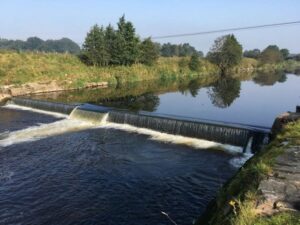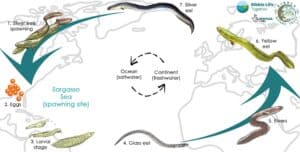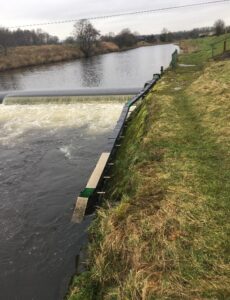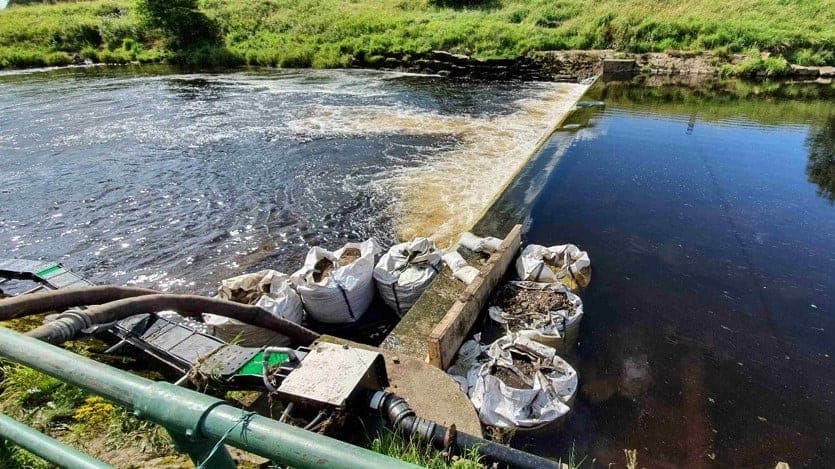Weirs come in all shapes and sizes, with the majority having been created during the Industrial Revolution to harness the power of water. However, some weirs have been constructed more recently, particularly gauging station weirs.

One of these is the weir at Henthorn gauging station. This gauging station is located across the River Ribble near Clitheroe, Lancashire, and provides river level and flow data for the Environment Agency. The data is then used for various purposes, but most importantly to monitor flood risk. However, the weir also hampers the migration of eels upstream into the upper stretches of the River Ribble.
Like weirs, fish passes also come in all shapes and sizes and there are many factors to consider. At first glance small weirs like Henthorn gauging weir might not look hard to climb, but they are often much higher than they look. Eels are a species that find this weir particularly hard to pass.
Amazing eels

Obstructions on rivers, such as weirs, are one of the key issues facing eels. When completing their migratory journey eels are still tiny elvers, not the larger adults that may immediately spring to mind. By helping eel elvers to migrate and making their journey easier at this early stage in life, we can increase their chances of surviving into adulthood and returning to the seas to spawn.
A simple solution with a big benefit

The existing eel pass on this weir was a 25-metre solar powered pumped eel pass which was no longer functioning due to flood damage and blockages. The nature of the pass meant that maintenance was needed regularly, but often proved difficult and risky.
So, together with the Environment Agency, Ribble Rivers Trust designed a new, simple, maintenance free eel pass which will be self-cleaning and cannot trap any debris. Rather than relying on pumps the new eel pass is fed by the flow of the river so, providing water flows over the weir, the pass will work. The pass uses eel tiles which have a grid of finger-like projections which the eels use to brace against as they wriggle up against the flow.
The work was completed with Bailey Contracts Ltd, the contractors chosen to construct the eel pass. Despite the COVID-19 pandemic work was still able to go ahead, but with changes to usual operating procedures.
The pass itself was prefabricated off site in May of this year, and work on the site commenced in August. Once the original non-functioning pass had been disassembled and removed, the new eel pass was transported to site and installed, a process that was completed by the end of August, despite high river levels halting construction for a period of time.


